Wood Stoves and Health Issues
- November 2, 2023
- 10 comment
Wood stoves create a cozy ambiance in our homes, but it’s important to consider their health and environmental impacts. This article explores the benefits and risks associated with wood stove usage, focusing on potential health concerns and safety measures.

From the charm of a flickering fire to the complexities of air quality and emissions, we’ll provide a balanced view, offering practical tips for using your wood stove responsibly. Our goal is to ensure you can enjoy the warmth of your stove while taking care of your health and the environment.
Disclaimer: The information provided in this article is for educational and informational purposes only and should not be construed as professional advice. While I have diligently aimed to provide accurate and trustworthy information, it’s important to note that operating wood stoves carries inherent risks and is subject to diverse regulations and standards across different areas. We encourage readers to consult with qualified professionals and adhere to local laws and guidelines when installing, operating, or maintaining a wood stove.
1. Particulate Matter (PM) and Its Impact on Health
While wood stoves bring the comfort of warmth to our homes, they also emit particulate matter (PM), a less visible but significant byproduct. These microscopic particles, often too small to be seen with the naked eye, can have a profound impact on our health.

- Nature of PM: PM is a complex mixture of tiny solids and liquid droplets, composed of various substances like organic chemicals, metals, and even soil or dust particles. Their small size allows them to penetrate deeply into our respiratory system when inhaled, posing health risks.
- Respiratory Concerns: Exposure to PM primarily affects the lungs and airways. It can exacerbate asthma and other respiratory conditions, leading to symptoms such as persistent coughing, wheezing, and shortness of breath. Prolonged exposure can even contribute to chronic bronchitis, characterized by inflammation and mucus production in the bronchial tubes.
- Cardiovascular Complications: PM also poses risks to cardiovascular health. It can enter the bloodstream and impact the heart, contributing to heart attacks, especially in those with pre-existing conditions, and can trigger irregular heart rhythms or arrhythmias.
- Long-Term Implications for Lung Health: Continuous exposure to PM can gradually impair lung function, leading to reduced oxygen supply and potential damage to lung tissues. This can result in conditions like emphysema, a form of chronic obstructive pulmonary disease (COPD), which severely affects breathing.
While the emission of PM from wood stoves is a concern, understanding these risks and adopting best practices can significantly reduce their impact. Modern wood stove designs and proper usage techniques can help minimize PM emissions. Additionally, ensuring good ventilation and regular maintenance of your stove are essential steps for safeguarding health. By being aware and taking these precautions, we can enjoy the benefits of wood stoves while protecting ourselves and our loved ones.
2. Understanding Carbon Monoxide and Its Risks
Carbon monoxide (CO) is a silent yet potentially deadly emission from wood stoves. Its insidious nature, marked by its invisibility and lack of smell, makes it a significant concern, as its presence is often undetectable until symptoms arise.
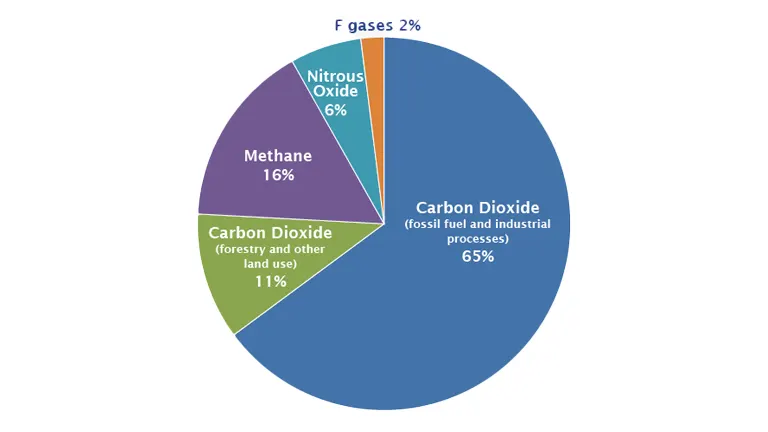
- Characteristics of CO: CO is a byproduct of incomplete combustion. In wood stoves, this can occur if the wood isn’t burning efficiently or if the stove isn’t properly maintained, increasing the risk of CO emissions.
- Oxygen Displacement in the Blood: The primary danger of CO is its ability to bind with hemoglobin in our red blood cells more readily than oxygen, displacing the oxygen needed for vital organ function. This can lead to tissue damage and various health issues.
- Symptoms and Progression: Initial exposure to CO can cause symptoms similar to the flu, including fatigue and mild headaches. As exposure increases, symptoms can become more severe, such as dizziness, impaired judgment, and difficulty in breathing. Prolonged exposure can lead to critical conditions like unconsciousness and respiratory failure.
- Vulnerable Populations: Certain groups, like infants, the elderly, and those with chronic health conditions, are more susceptible to CO’s effects, even at lower levels.
Safety Precautions
Given the potential risks associated with CO:
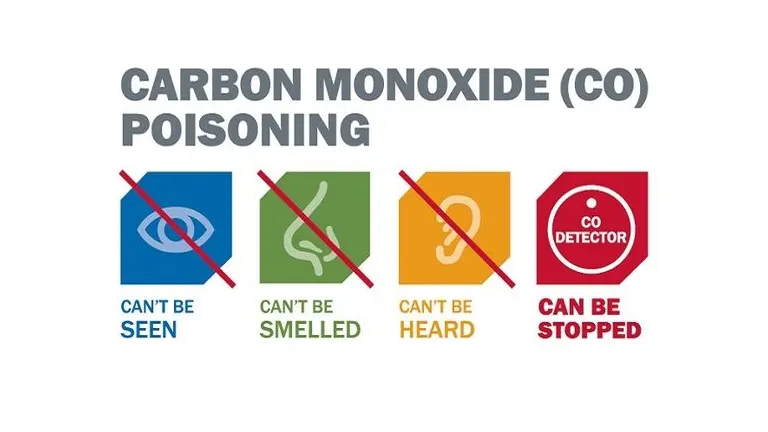
- Install CO Detectors: Homes with wood stoves should be equipped with carbon monoxide detectors. These devices are essential for early detection of elevated CO levels.
- I recommend using this one Kidde Carbon Monoxide Detector
- Proper Maintenance: Regular inspection and cleaning of your wood stove and chimney, along with ensuring adequate ventilation, are crucial in reducing CO risks.
- Be Informed: Knowing the symptoms of CO poisoning and educating household members can be lifesaving.
It’s important to note that while the risks associated with CO are significant, responsible use and maintenance of wood stoves can greatly minimize these dangers. Advances in wood stove design and technology have also contributed to safer and more efficient burning, reducing the likelihood of CO emissions. By understanding the risks and taking proactive measures, users can enjoy the warmth and benefits of their wood stoves while ensuring their safety and the safety of those around them.
3. Volatile Organic Compounds (VOCs) and Polycyclic Aromatic Hydrocarbons (PAHs)
Wood combustion involves more than just smoke and ash; it also releases Volatile Organic Compounds (VOCs) and Polycyclic Aromatic Hydrocarbons (PAHs), each carrying its own set of health concerns.
What is VOCs ?
VOCs are a broad group of organic chemicals that vaporize at room temperature. Burning wood releases various VOCs into the air.
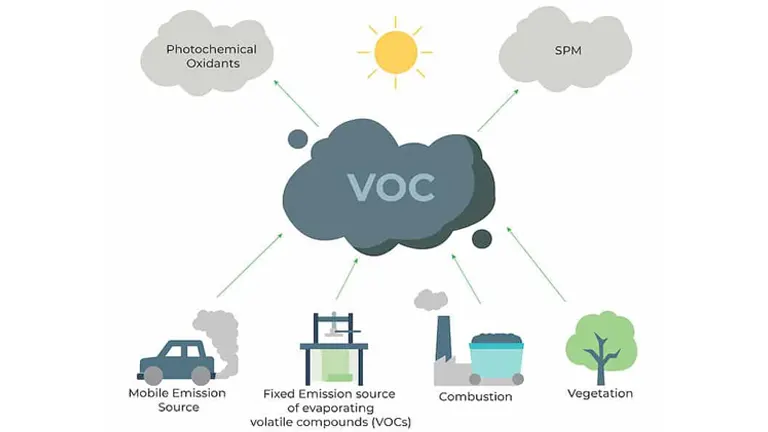
- Short-Term Health Effects: Immediate exposure to certain VOCs can cause eye irritation, respiratory discomfort, and allergic skin reactions. Symptoms like headaches, nausea, and loss of coordination are also common.
- Long-Term Health Implications: Chronic exposure to specific VOCs can lead to more serious health issues, including damage to the liver, kidneys, and central nervous system. Some VOCs are also known or suspected carcinogens.
PAHs Explained
PAHs consist of over 100 different chemicals formed from incomplete combustion. They are known for their ring-shaped molecular structure.

PAHs are mainly recognized for their carcinogenic properties, with the potential to cause mutations and increase cancer risk, notably lung cancer. Other associated risks include skin and bladder cancers.
Vulnerable Populations
Children, the elderly, and individuals with compromised immune systems or pre-existing health conditions are particularly vulnerable to VOCs and PAHs, potentially experiencing more severe reactions at lower concentrations.
Protective Measures
Understanding the risks is the first step, but action is the key:
- Efficient Combustion: Using dry, seasoned wood and modern stoves promotes efficient burning, thus reducing VOC and PAH emissions.
- Ventilation is Vital: Adequate ventilation helps disperse emissions quickly, lowering indoor concentrations of harmful compounds.
- Regular Maintenance: Keeping your stove and chimney clean minimizes the risk of incomplete combustion and subsequent emissions.
- Stay Informed: Being aware of these hazards aids in making informed decisions. Community education and awareness campaigns are crucial in spreading knowledge and promoting safe practices.
While VOCs and PAHs present risks, understanding and mitigating these through efficient stove use, proper ventilation, and regular maintenance can significantly reduce exposure. This proactive approach allows for the safe and enjoyable use of wood stoves, minimizing health risks while maintaining their warmth and comfort.
4. Allergens
Wood stoves, with their traditional charm and cozy warmth, may inadvertently affect indoor air quality, particularly impacting individuals sensitive to allergens. Understanding this impact and how to manage it is important for maintaining a healthy indoor environment.

How Allergens are Dispersed
Activities like loading wood into the stove and stoking the fire can disturb and lift dust and other particulates within a home. These particles can become airborne, lingering in the air and posing a risk for inhalation.
Types of Allergens
Common indoor allergens include dust mites, pet dander, pollen, and mold spores. Though not a direct byproduct of wood combustion, these allergens can be resuspended due to the air currents created by wood stove use.
Health Impacts
- Immediate Reactions: Exposure can trigger allergic reactions like sneezing, nasal congestion, eye irritation, and skin rashes, particularly in sensitive individuals.
- Asthma and Chronic Symptoms: Airborne allergens can exacerbate asthma symptoms and may contribute to the development or worsening of allergic rhinitis and other respiratory issues.
- Enhanced Risks in Winter: In colder months, reduced ventilation in tightly sealed homes can lead to higher indoor allergen concentrations, increasing exposure risk.
Preventive Steps
- Regular Cleaning: Keeping the area around the wood stove clean reduces dust and allergens. Using a HEPA filter vacuum cleaner is effective in capturing these small particles.
- Air Purifiers: Air purifiers in living areas can help remove allergens from the air, benefiting those with allergies or respiratory sensitivities.
- Mind the Wood: Store wood outdoors and bring in only what’s needed for immediate use, minimizing the introduction of outdoor allergens.
- Enhanced Ventilation: Allowing fresh air circulation, even during colder months, can disperse allergens and improve indoor air quality.
While wood stoves can contribute to the dispersion of allergens, understanding these effects and implementing the above steps can greatly mitigate the risks. By maintaining cleanliness, managing ventilation, and using tools like air purifiers, households can enjoy the warmth of a wood stove without compromising air quality and health.
5. Environmental Impacts of Wood Stoves
While wood stoves provide a natural and traditional source of heat, their environmental impact is a significant concern that warrants attention.
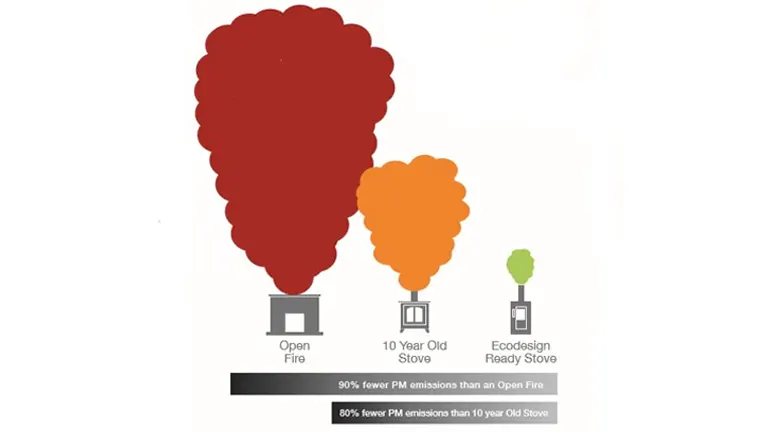
Concerns About Deforestation
The increasing use of wood for heating raises concerns about deforestation. Although wood is a renewable resource, it is not unlimited. Unsustainable harvesting practices can lead to forest depletion, threatening biodiversity and the planet’s ability to absorb carbon dioxide, thereby exacerbating climate change issues.
Lifecycle Environmental Footprint
While wood burning is theoretically carbon-neutral, the entire lifecycle of wood, including transportation and processing, adds to its environmental footprint.
Local Air Quality Concerns
- In areas densely populated with wood stoves, especially in valleys or regions with still air, air quality can deteriorate, leading to smog-like conditions in colder months. Emissions from wood stoves, such as particulate matter and VOCs, are primary contributors to this degradation.
- Such pollution disproportionately affects vulnerable groups, including children, the elderly, and those with pre-existing health conditions, exacerbating respiratory and cardiovascular problems.
Recommendations for a Greener Heat Source:
- Eco-friendly Wood Sources: Use wood from sustainably managed forests to ensure a balance between utilization and replenishment.
- Proper Ventilation: Correct venting of wood stoves minimizes indoor pollution and aids in more efficient combustion, reducing outdoor emissions.
- Maintenance is Key: Regular maintenance ensures efficient burning, thus lowering fuel consumption and emissions.
- The Right Wood Matters: Seasoned wood, with its lower moisture content, burns hotter and cleaner, releasing fewer pollutants.
- Upgrade to Cleaner Technologies: EPA-certified stoves meet high emission standards and offer a more efficient and cleaner burning process.
- Awareness and Adaptability: Stay informed about local air quality and adjust wood-burning practices accordingly, especially on days with predicted low air quality.
While we enjoy the warmth of our wood stoves, it’s vital to remain mindful of their environmental impact. By adopting sustainable practices and modern technologies, we can mitigate these effects, ensuring our comfort doesn’t compromise the health of our planet.
Conclusion
Wood stoves, with their timeless charm and efficient heating capabilities, hold a special place in many homes. However, it’s crucial for users to be cognizant of the health and environmental impacts associated with their use. This awareness, coupled with proactive measures and informed decisions, allows homeowners to maximize the benefits of wood stoves while effectively minimizing potential risks.
For those seeking alternatives that align with modern safety and environmental standards, exploring EPA-certified wood stoves can be a wise choice. These stoves are designed to offer cleaner and more efficient heating solutions. To assist in this endeavor, we have compiled a list of the Best EPA Certified Wood Stoves for 2023, offering options that balance warmth, efficiency, and responsibility towards health and the environment.
In conclusion, the key to enjoying the cozy warmth of a wood stove lies in balancing its traditional appeal with a commitment to safety and environmental stewardship. By staying informed and choosing wisely, we can ensure that our comfort does not come at the cost of our well-being or that of the planet.
FAQs
- Why do I sometimes feel dizzy when using my wood stove?
Dizziness can be a symptom of carbon monoxide (CO) exposure, a harmful gas emitted from incomplete combustion. Ensure your wood stove is well-ventilated and regularly inspected for leaks or malfunctions. - Can the smell from the wood stove affect my indoor pets?
Pets can be affected by wood stove emissions, similar to humans. Good ventilation is key to keeping both human and animal occupants of your home safe. - Is there a ‘safest’ type of wood to burn to reduce health risks?
Burning hardwoods like oak or maple, which burn hotter and cleaner than softwoods, is recommended. They produce fewer pollutants and are generally safer. - Do newer wood stoves produce fewer pollutants than older models?
Modern wood stoves, especially EPA-certified models, are designed for greater efficiency and lower emissions compared to older stoves. - Why do my eyes water when I’m near my wood stove?
Eye irritation can be caused by particulate matter or VOCs released during wood combustion. Ensuring proper stove maintenance and room ventilation can help mitigate this. - Can houseplants help with indoor air quality affected by wood stove emissions?
While houseplants can improve overall indoor air quality by absorbing certain pollutants, they are not a replacement for adequate ventilation in homes using wood stoves. - How often should I clean or service my wood stove to ensure safety?
Annual inspections and cleanings are ideal, particularly before the onset of colder weather, to ensure your wood stove operates safely and efficiently. - Are there long-term health issues from using a wood stove over one’s lifetime?
Chronic exposure to wood smoke can increase the risk of respiratory and certain heart-related conditions. Proper use and maintenance of the stove, along with clean combustion practices, can help mitigate these risks. - How does burning wood affect outdoor environmental and community health?
High concentrations of wood stoves in a community can lead to increased air pollution, affecting the overall health of the community, especially in vulnerable groups like children and the elderly. - Are there safer alternatives to wood stoves for those concerned about health risks?
For those seeking the ambiance of a wood stove with fewer health risks, electric or gas fireplaces are good alternatives. If you prefer wood burning, modern EPA-certified wood stoves or pellet stoves offer a cleaner-burning and more efficient option.
We’ve explored the potential health risks and safety measures associated with wood stoves. Now, we’d love to hear your experiences! Do you have tips on maintaining air quality, or perhaps a story about upgrading to a safer, more efficient stove model? Share your thoughts and join the conversation below. Let’s keep our homes warm and our air clean together!

David Murray
Forestry AuthorI'm David Murry, a forestry equipment specialist with a focus on chainsaw operation. With over 13 years of experience, I've honed my skills in operating and maintaining a wide range of machinery, from chainsaws to log splitters. My passion for the outdoors and commitment to sustainable forestry drive my work, which emphasizes safety, efficiency, and staying updated with industry advancements. Additionally, I'm dedicated to sharing my expertise and promoting environmental awareness within the forestry community.
10 comments
The species of wood burned is important. Years ago London was ringed with forests mainly of Ash, Hornbeam and Birch. I only burn these and fruit tree wood - apple, pear , cherry etc. I have measured my emissions using a PM meter and a gas analyser- emissions almost zero. Certain species should never be burned - conifers, pines etc. any resinous wood. I am a retired tree surgeon of 40 years experience with a degree in forestry management.
David G Edwards
November 10, 2023 12:40 pmI have a multi fuel stove, which is lit every day from November to April. I also have health issues, but I like watching the flames in the fire ( it's far more interesting than the crap on telly ) I certainly won't be running central heating instead of it
John
November 10, 2023 11:12 amI have a log burner. I have a carbon alarm. Smoke less coal hard logs I only Bern in winter .I have a ash hover. have all doors open in my bungalow. There is aways a window open . I find it cheaper than gas and electricity.
Linda Tydeman
November 10, 2023 5:22 amWe have a heat exchanger with a blower that turns on and off with the temperature control. We also circulate through the central unit through a filter, that filters out even the smallest particle. I quit using it because the filter would clog up in a matter of a week, I need to install a carbon monoxide alarm especially since there is a baby in the house
John Wieder
November 7, 2023 2:41 pmCan you make an article about the harm caused by the petrol chainsaws? Fume, oil lubricants etc. Please be deatild! Kind regards Csaba
Csaba
November 7, 2023 5:58 amWhat about a bio fuel log burner?
Elaine Panton-Tombri
November 6, 2023 3:24 pmBe as thorough with mass produced foods, as you are about wood burning stoves.
Jamie Toscano
November 5, 2023 9:47 pmWe use our log burner through the winter .we have the chimney cleaned befor we use it every year and only burn kiln dried hard wood and smoke less coal .also we have a carbon alarm in the room
John
November 4, 2023 2:27 pmWhat about the use of an electrostatic precipitator as a means of dealing with any air pollution caused by the use of a woodburner?










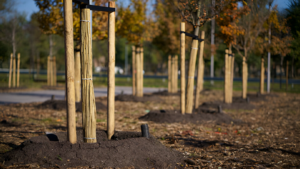



I live in a fairly remote area in Eastern Washington. The major heating appliance is a wood pellet stove. I am now 85 years old and just had an ultrasound of my abdomen and bladder. The results are my bladder has a spot in it. Now, I have to go and have an insertion into my urinary tract into my bladder for further investigation. I have been using the pellet stove for about six and a half years. I am now getting a lot of pain in my abdomen area which several months back, I didn't have. Now I am concerned about the possibility of the spot being cancerous. I have googled this problem and found out that wood pellets have chemicals and when burned, emits toxic fumes. The pellet bags have warnings about it possibly causing cancer. Although the stove is cleaned regularly, still there is so much ash that more frequent cleaning is needed. This holds true in areas where the temperature gets as low as 15-20 degrees below zero at times during winter. Electric heat is so expensive here and can cost $500 a month to use. That is my comment about what I am experiencing.
Mel T
March 1, 2024 3:35 am